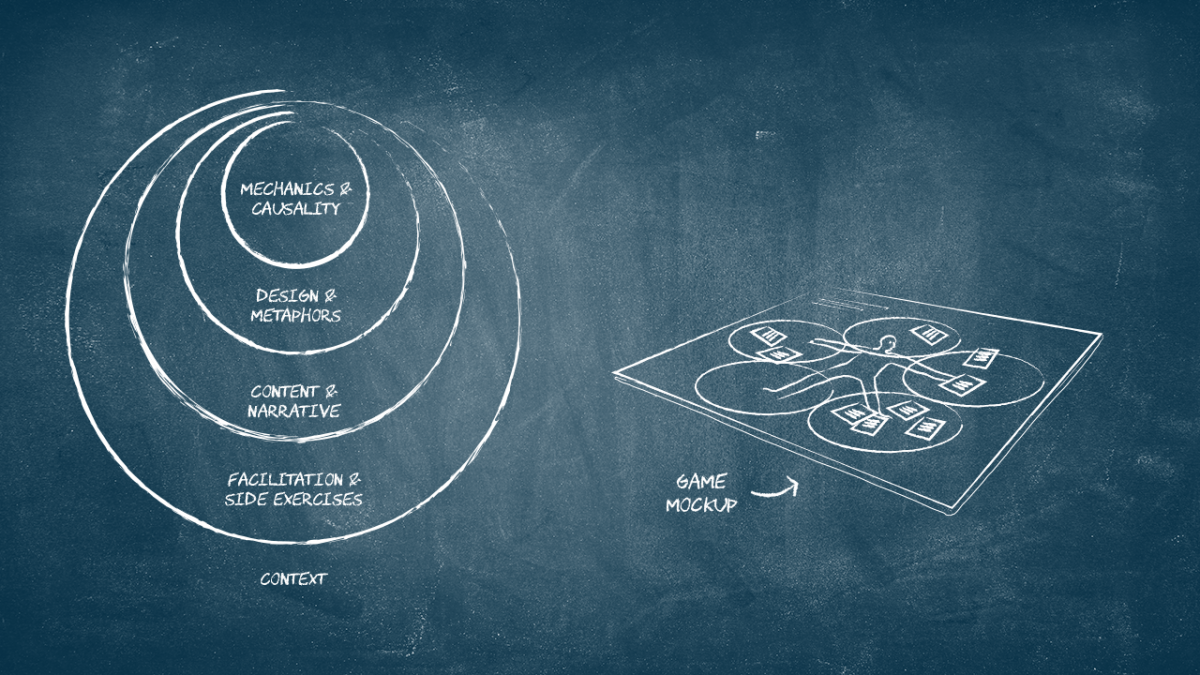When it comes to change a major obstacle is often the lack of understanding and the huge amount of distrust from employes. Games are an efficient tool to involve relevant stakeholders and employees and to strengthen their acceptance and understanding.
70% of all change processes fail. At least that is what John Kotter, one of the godfathers of the change management field, estimates in his 1995 bestseller ‘Leading Change’.
In other words, only one in three change processes are successful.
These are tough odds and unfortunately they do not seem to improve. In spite of an overabundance of management books, MBA programmes, and a plethora of research, organisations continue to fall short in the attempts to manage change.
According to John Kotter communication and understanding of the strategy is a crucial point when it comes to change management:
“I have for decades watched CEOs and other executives try to explain a corporate strategy to a small group of senior managers or to a much larger group of staff. For the most part, it has not been a pretty sight."
In the case of senior managers, I usually hear 3 or 4 different interpretations of what the boss said, or disagreements about what they thought he or she said. In either case, no alignment at the top."
"In the case of a larger group of staff, often many people look on blankly during the presentation. They may appreciate a CEO’s willingness to share crucial plans. But because they don’t have the context or experience, they can’t even begin to understand what is being thrown at them in a thick PowerPoint deck. And what they do see certainly doesn’t make them want to get up in the morning and come to work", Professor John Kotter wrote in his book.
In this area, in particular, games can be of great help. Games are an excellent tool for shaping and creating a mutual understanding of shared goals and strategies.
A well-designed and well-facilitated learning game offers an opportunity to actively engage the participants in constructive conversations about important issues.
The conversations can create a common understanding and a mutual connection, and stimulate trust, reflection, and sharing of knowledge.
Games can create a common reference; a shared language that enables talking about the difficult issues openly and legitimately.
Games can stage particular situations, themes, and considerations that can support central learning points through the consequences of the game mechanics.
As an example, a strategy game can be designed in such a way that participants will fall behind in the competition if they make decisions based on the company’s old strategy, rather than the new. In that way they are forced to use the new strategy as a tool to overcome obstacles and challenges.
The challenge of trust
The American organisational psychologist Rick Maurer divides resistance to change into three levels:
- I don’t understand it
- I don’t like it
- I don’t trust you
The first level applies to lack of information. We need more time and more information in order to understand and accept the change. This is a communication challenge that most managers are able to carry out over time.
The second level is more serious. This is resistance on the emotional level – often as a reaction to the experience of loss of control, power, status, or respect. We feel lonely, inadequate, and isolated in the encounter with the change. This kind of resistance cannot be solved with one-way communication. It requires dialogue and engaging tools from the leadership toolbox.
The third and last level, lack of trust, is the most dangerous. It is almost impossible to work constructively with change if the employees do not trust the intentions of the management. There can be many reasons for the mistrust, from clashes in culture or values, to negative experiences that the employee carries within. Re-establishing trust is hard and often requires the manager to listen rather than talk.
A common mistake made by managers is to automatically assume that all resistance stems from a lack of understanding. The manager often has a positive impression of the change and thus blindly assumes that the employees, too, will see the light when they have all the facts.
This misunderstanding is often born from an organisational culture where resistance is seen as disloyalty. It causes the employees to pretend that all issues are caused by a lack of understanding. We do not trust the boss, or like the change, but we are afraid to express more than a mere ‘it is difficult to understand’.
The key to dealing with resistance on levels 2 and 3 is active involvement. Game-based tools offer a unique opportunity to work with involvement in a structured and effective manner.
A game lets us experience in a safe environment, toning down the seriousness and pressure. Although the subjects themselves are serious and professional, we are just playing – the game lets us enter a magic circle where the everyday conventions and pressure of expectation are of less importance.


